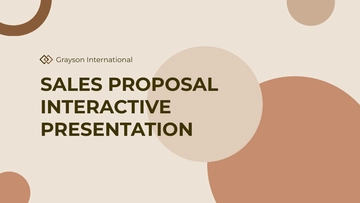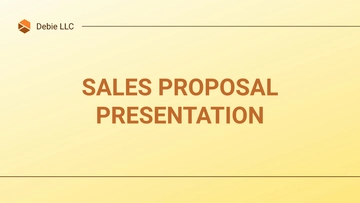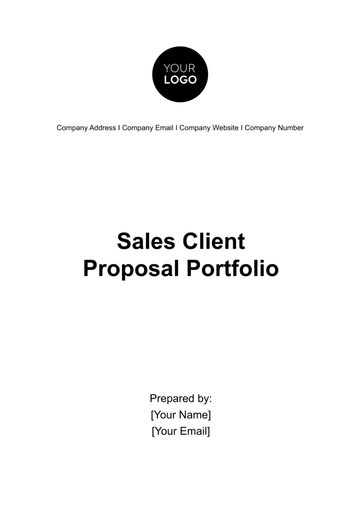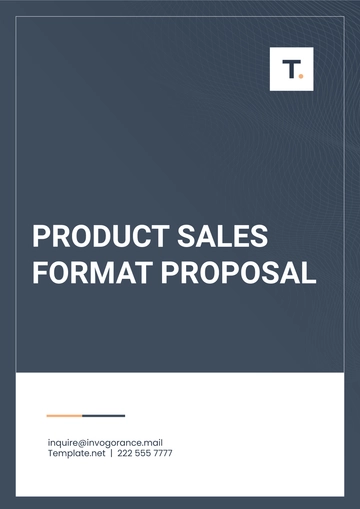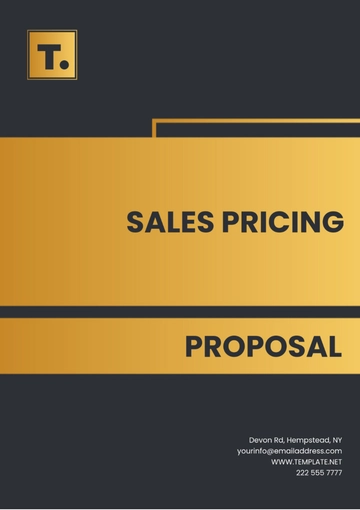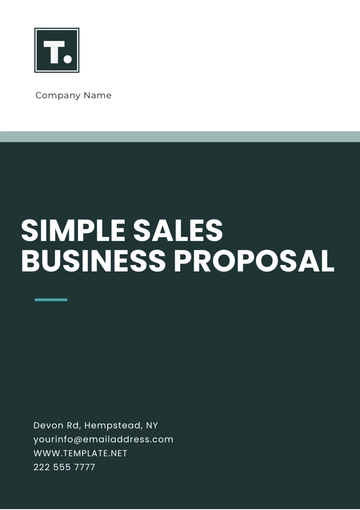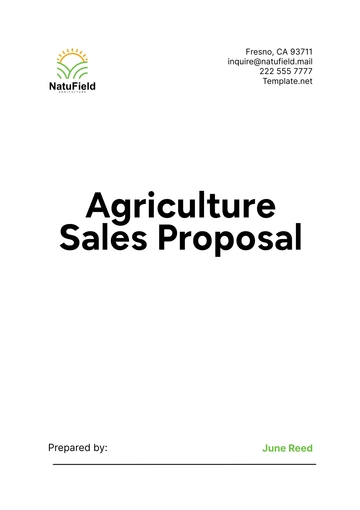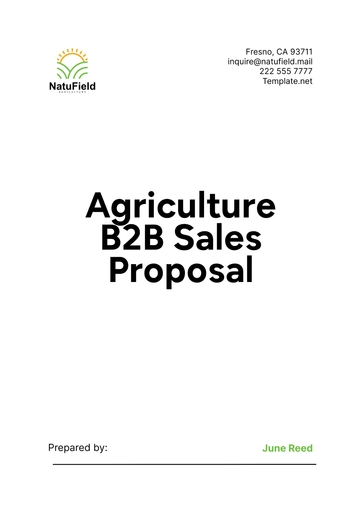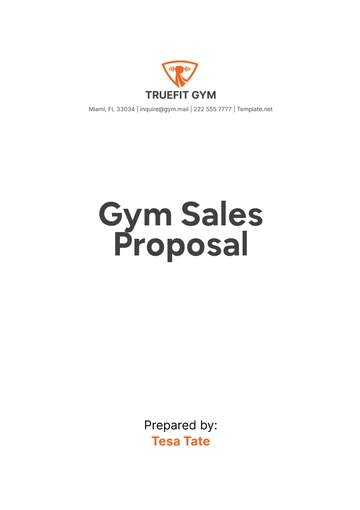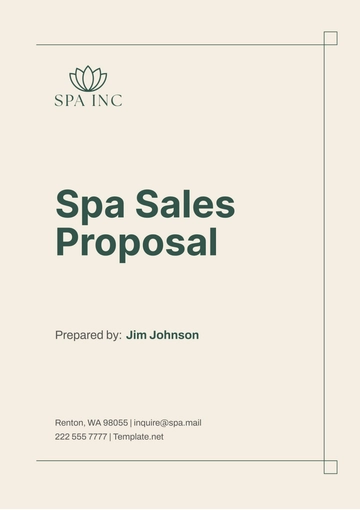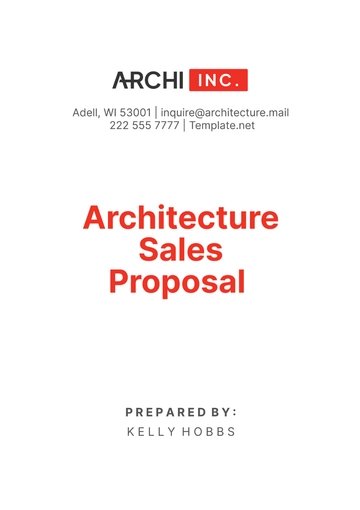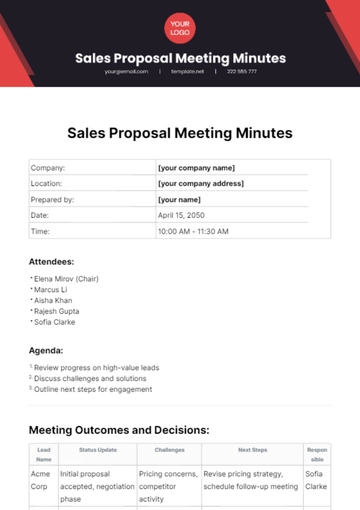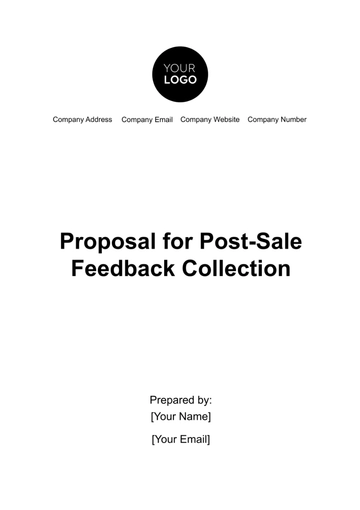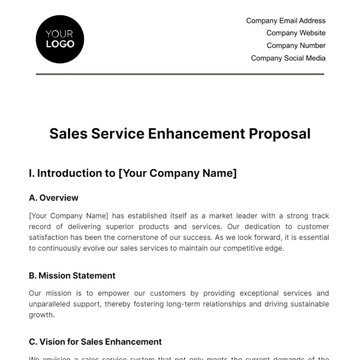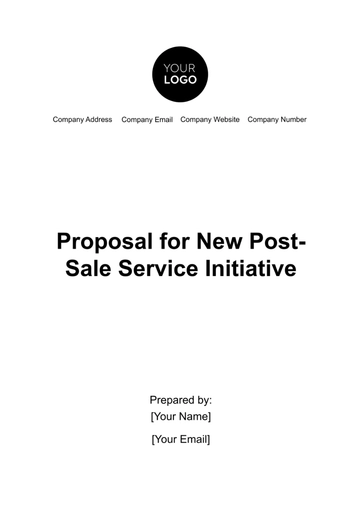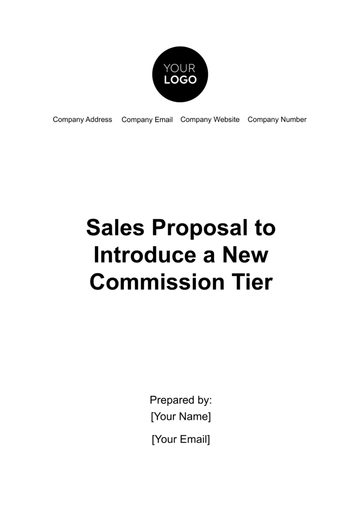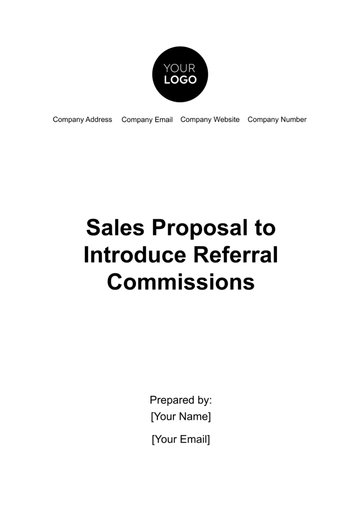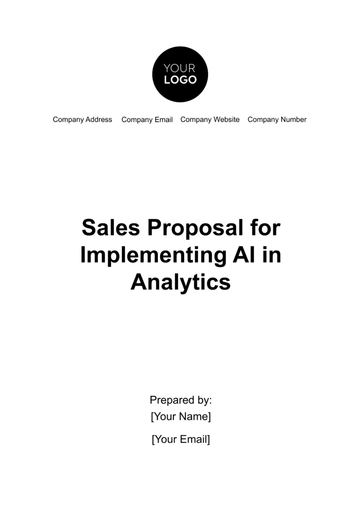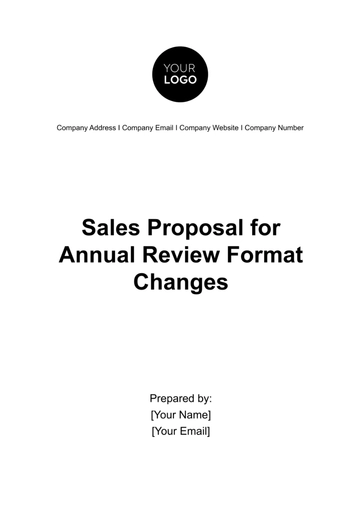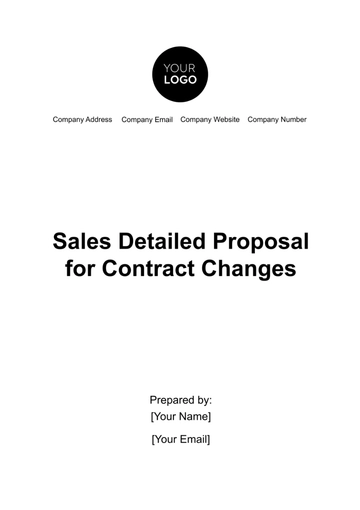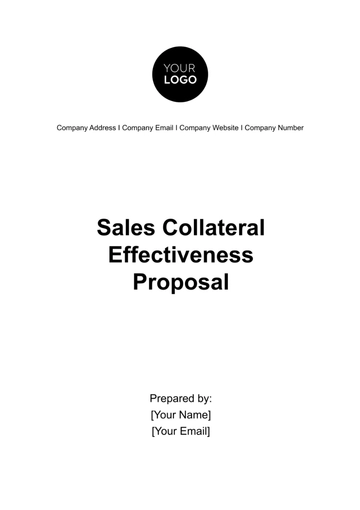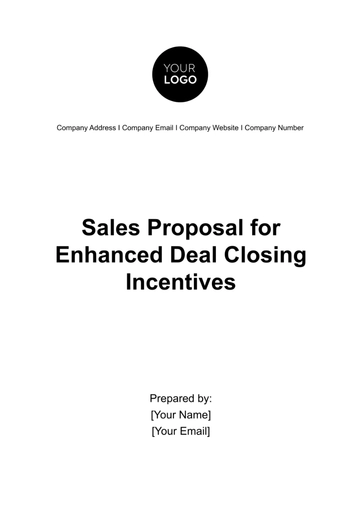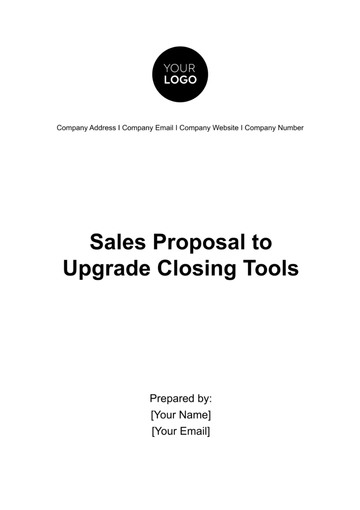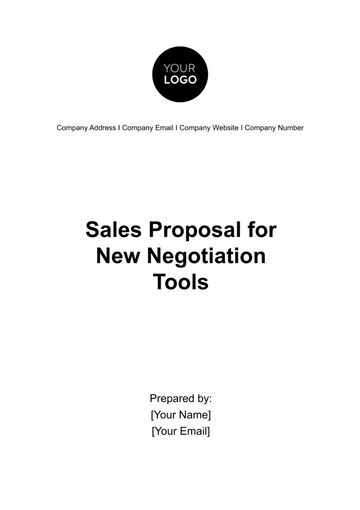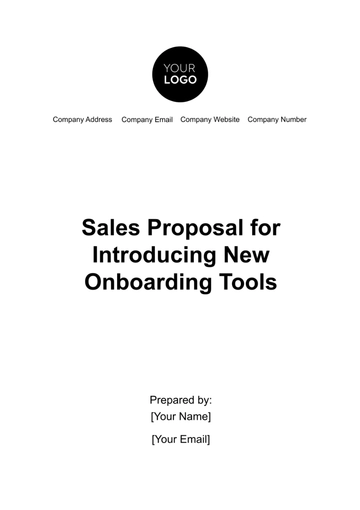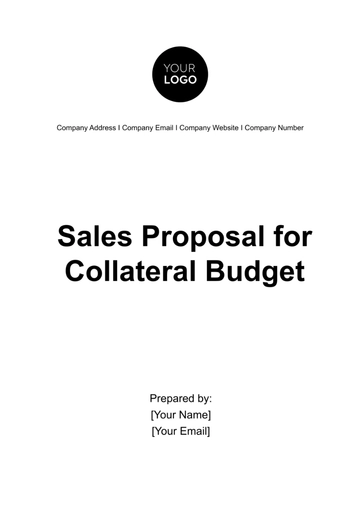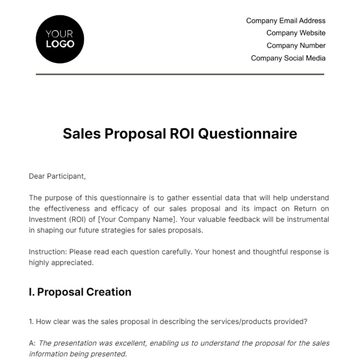Free Sales Proposal Management Best Practices
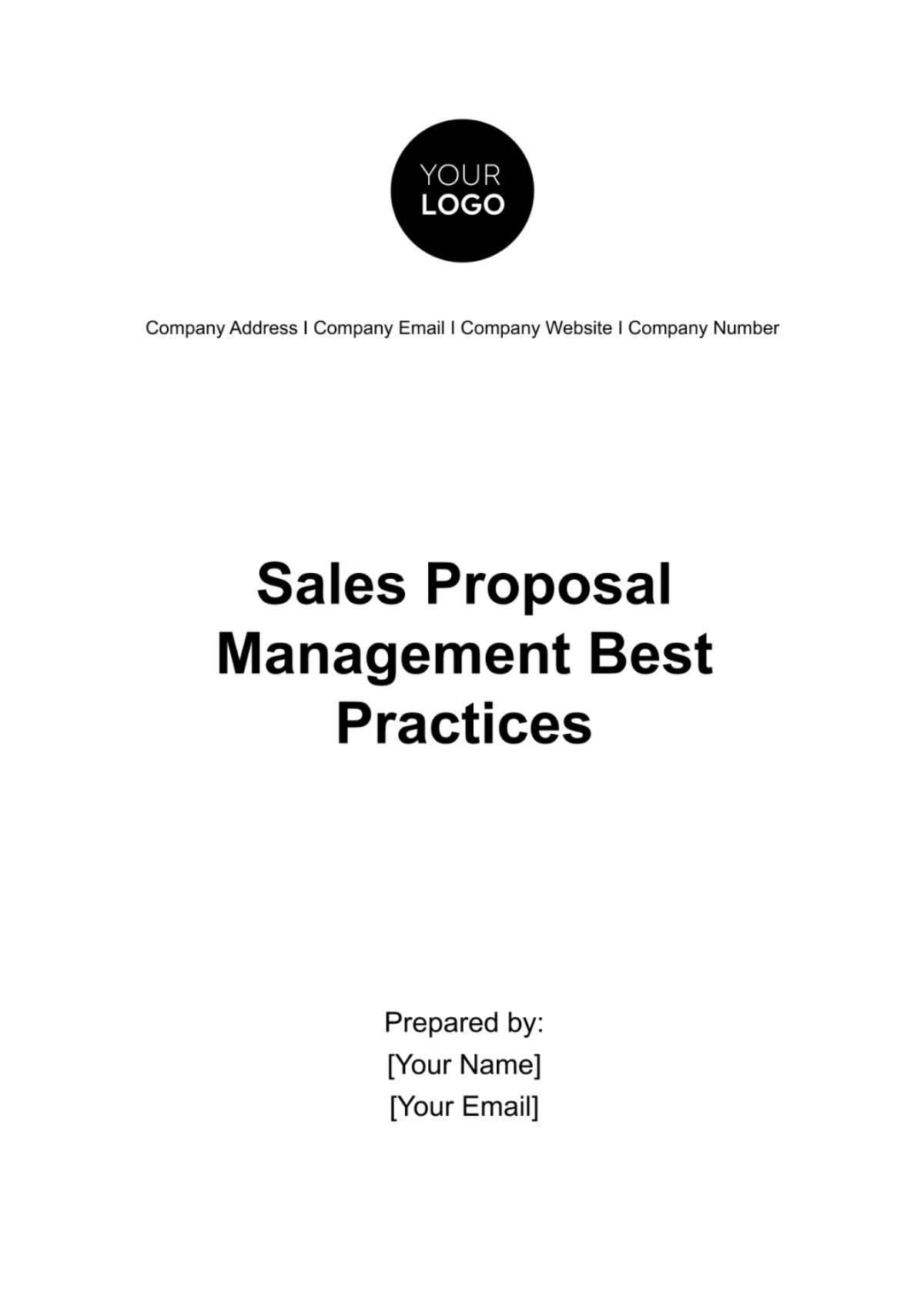
I. INTRODUCTION
In today's dynamic business landscape, the art of effective sales proposal management is more critical than ever. It serves as the gateway to securing new clients, partnerships, and revenue streams. This guide is designed to be your compass in navigating the complex terrain of sales proposal management. It's not just about drafting documents; it's about crafting compelling narratives that resonate with your audience, persuading them to take action.
Sales proposals are not mere documents; they are your opportunity to showcase your expertise, demonstrate your commitment to solving the client's challenges, and align your solutions with their specific needs. Successful sales proposals not only close deals but also lay the foundation for long-term, fruitful relationships. Therefore, in this guide, we delve into best practices that will help you create proposals that not only win business but also win the hearts of your clients.
II. TEAM COLLABORATION
Here's how to foster collaboration and assign roles and responsibilities effectively:
Team Roles: Clearly define the roles within your team. Assign one person as the proposal manager responsible for overseeing the entire process. Designate subject matter experts (SMEs) who can provide technical or specialized input. Have a lead writer responsible for crafting compelling content. An editor ensures the proposal is well-polished and free of errors.
Regular Meetings: Hold regular team meetings to ensure everyone is aligned on the proposal's goals, objectives, and timelines. These meetings are opportunities for team members to share their insights and discuss challenges.
Collaborative Tools: Utilize collaboration tools and project management software to facilitate smooth communication. These platforms allow for real-time editing, commenting, and task assignments.
Transparency: Maintain transparency within your team by sharing information, updates, and changes. Transparency encourages open communication, fosters trust, and ensures everyone is working towards the same goal.
Feedback Loop: Establish a feedback loop where team members can provide constructive criticism and suggestions. This process promotes learning and continuous improvement.
Incorporating these collaborative practices ensures that every member of your team plays a critical role in creating compelling proposals.
III. CLIENT-CENTRIC APPROACH
Here's a more detailed look at this crucial aspect of proposal management:
Understanding Client Needs
To tailor proposals effectively, you must begin by gaining a deep understanding of your clients. This requires diligent research, attentive listening, and open communication. Take the time to understand their pain points, goals, and specific requirements. What are their challenges, and how can your product or service provide a solution? The better you grasp their needs, the more accurately you can address them in your proposals.
Tailoring Proposals Accordingly
Every client is different, and their needs vary. A client-centric approach means customizing your proposals for each individual client. Don't rely on generic templates; rather, create unique proposals that resonate with their specific situation. Incorporate their language, address their concerns, and showcase how your solution is the perfect fit for them. It's about making the client feel like your proposal was crafted exclusively for them.
Personalization and Relationship Building
Client-centricity extends beyond the proposal itself. It encompasses the entire client experience. Build relationships by showing genuine interest and care. Acknowledge their milestones and achievements. Send personalized messages and thank-you notes. The goal is to create a connection that goes beyond business transactions and fosters trust and loyalty.
Adapting to Changing Client Needs
Client needs can evolve over time. Stay in constant communication with your clients to ensure you remain aware of their changing requirements. Your ability to adapt and modify proposals accordingly is a significant advantage. A client-centric approach is an ongoing process, ensuring that you are always in sync with your client's evolving needs.
Measuring Client-Centric Success
Evaluating the success of your client-centric approach is critical. It involves tracking the satisfaction levels of your clients and the success rates of your proposals. Collect feedback and make necessary adjustments to further improve your client-centric strategies.
IV. PROPOSAL PROCESS WORKFLOW
Regardless of your business type, a structured workflow ensures efficiency, consistency, and better control over the proposal process. Here's a more detailed look at this critical aspect:
Creating a Structured Workflow
Start by mapping out the entire proposal process from initiation to submission. This should include steps such as prospecting, research, drafting, review, editing, and final submission.
Clearly define who is responsible for each step. Assign roles based on team members' strengths and expertise. Having a clear owner for each task ensures accountability.
Establish a timeline with milestones for each stage. This helps you track progress, identify bottlenecks, and meet deadlines effectively.
Implement a centralized system for tracking and managing proposals. Whether it's a project management tool, proposal management software, or a shared drive, having a central hub for proposal-related documents and communications streamlines the process.
Managing Timelines and Deadlines
Time management is crucial in proposal management. Develop a timeline that sets realistic deadlines for each stage of the proposal process, from research to submission.
Ensure that everyone involved in the proposal process is aware of these deadlines and adheres to them. Regularly review progress and make adjustments as necessary to meet deadlines.
Create a clear process for handling urgent proposals. Define when and how such proposals should be expedited, while still maintaining quality and accuracy.
Handling Exceptions and Contingencies
In real-world business, not every proposal will follow the standard workflow. Create a system for handling exceptions and contingencies. This could be due to urgent client requests, unforeseen challenges, or unique proposal requirements.
Develop guidelines for how to address these exceptions while ensuring quality and compliance. This can include special review procedures or quicker decision-making processes.
Streamlining Approvals
Clearly define the approval process for proposals. Specify who needs to approve each proposal before submission.
Implement a streamlined review and approval process to avoid delays and ensure that the proposal aligns with the company's objectives and client needs.
Training and Continuous Improvement
Regularly train your team on the proposal workflow, ensuring everyone understands their roles and responsibilities. Provide ongoing guidance and support to keep everyone aligned with best practices.
Continuously improve the workflow by analyzing past proposals. Identify bottlenecks, issues, and areas for enhancement, and make adjustments to the workflow accordingly.
V. CONTENT AND MESSAGING
The way you present your proposal not only conveys your professionalism but also directly influences the client's perception of your solution. Here's a more detailed breakdown of best practices for content and messaging:
PRACTICE | DESCRIPTION |
Audience Familiarization | Understand the demographics, needs, and pain points of your potential client. This approach immediately establishes a connection and showcases your commitment to meeting their needs. |
Value Proposition | Clearly define your value proposition and articulate the unique benefits and advantages of your solution. Highlighting the value you bring is essential for capturing the client's interest. |
Structure and Clarity | Maintain a logical structure and ensure clarity throughout your proposal. Start with a captivating executive summary that provides a concise overview of what's to come and follow this with well-organized sections that detail your solution, pricing, and expected outcomes. |
Data and Evidence | Support your claims with data and evidence. Demonstrating real-world results instills confidence in your proposal's validity. |
Address Objections | By acknowledging concerns and offering solutions, you show that you've thought through the process comprehensively and are ready to overcome challenges. |
Competitive Analysis | Highlight what sets you apart, from the competition, whether it's pricing, unique features, or superior customer service. A competitive analysis reinforces why your proposal should be the client's choice. |
Professional Language | Clarity and professionalism in your messaging inspire confidence in your abilities. |
Proofreading and Editing | A critical step is proofreading and editing your proposal. Take the time to ensure that your proposal is error-free and polished. |
Visual Appeal | Enhance the visual appeal of your proposal with relevant visuals, such as charts, images, and infographics. |
Call to Action | End your proposal with a clear and compelling call to action. An effective call to action propels the client towards making a decision. |
VI. QUALITY ASSURANCE
Here are key aspects to consider:
Review and Editing Processes
Create a standardized review process. Assign individuals or teams to thoroughly review proposals for errors, clarity, and alignment with the client's needs. Emphasize grammar, spelling, and formatting checks to maintain a high level of professionalism. Establish clear revision cycles, allowing for multiple rounds of review to refine and perfect each proposal.
Ensuring Accuracy and Professionalism
Your proposals must exude accuracy and professionalism. Every data point, statistic, and claim should be supported by credible sources. Ensure that you present your company in the best light possible by using consistent branding, visuals, and language. Avoid jargon that could alienate potential clients and prioritize clarity and simplicity.
VI. TECHNOLOGY INTEGRATION
Embracing the right tools and software solutions can streamline the process, enhance productivity, and facilitate collaboration. Here's how to harness technology effectively:
Utilizing Proposal Management Software
Leverage proposal management software to centralize and automate various aspects of your proposal workflow. Such software often includes features for document creation, version control, real-time collaboration, and analytics. It enables teams to work seamlessly on proposals, maintain a history of changes, and track document progress from creation to submission.
Streamlining the Proposal Process
Integrate automation and templates into your proposal process. This not only saves time but also ensures consistency in messaging and formatting. It allows your team to focus on content, client engagement, and strategy rather than repetitive administrative tasks. Tailor your proposal management software to your specific needs and workflow, whether you're a small business or a large corporation.
VII. CLIENT ENGAGEMENT AND FOLLOW-UP
Effective client engagement and follow-up are critical components of a successful sales proposal management process. They serve as the bridge between the initial proposal submission and the final decision, ensuring that your clients feel valued and informed throughout the entire sales cycle.
Prompt and Personalized Communication: After you've submitted a proposal, the first step is prompt communication. Send a personalized thank-you email or message to express your appreciation for considering your proposal. This not only demonstrates professionalism but also sets the stage for ongoing engagement.
Addressing Client Inquiries: Clients may have questions, concerns, or require further information. Timely responses to these inquiries are crucial. Be prepared to address their specific needs and provide additional details to reinforce the value of your proposal. Promptness in communication reflects your commitment to their business.
Scheduling Follow-Up Meetings: Depending on the complexity of the proposal, it may be beneficial to schedule follow-up meetings to discuss specific aspects or answer questions in person. These meetings allow you to delve deeper into the proposal's details and provide the opportunity to build a stronger rapport.
Customized Content: Tailor your follow-up messages to address each client's unique concerns. Reference specific points from your proposal and emphasize how your solution directly addresses their challenges. This level of personalization showcases your attentiveness and commitment to their success.
Provide Additional Resources: Sometimes, clients require further reassurance or information. Offer additional resources, such as case studies, testimonials, or whitepapers, to bolster the credibility of your proposal. This shows your dedication to transparency and building trust.
Maintain Consistent Communication: Even if there's no immediate action needed, maintain regular communication. Send updates about your company's achievements, new offerings, or industry trends that may impact the client's business. This keeps your proposal fresh in their minds and demonstrates a commitment to a long-term relationship.
Handling Rejections Gracefully: In the event of a rejection, respond professionally and graciously. Express your gratitude for the opportunity and leave the door open for potential future collaborations. The way you handle rejections can significantly impact your reputation in the industry.
VIII. METRICS AND EVALUATION
By establishing key performance indicators (KPIs) and analyzing data, you can refine your proposal management process. Here's a closer look at this critical aspect of sales proposal management:
A. Key Performance Indicators (KPIs)
To measure the effectiveness of your sales proposal management, it's crucial to establish KPIs that align with your business objectives. Some key metrics to consider include:
METRIC | DESCRIPTION |
Win Rate | This KPI tracks the percentage of proposals submitted that resulted in successful deals. It's a direct indicator of proposal effectiveness. |
Conversion Rate | Measures the percentage of leads or prospects who moved from initial contact to receiving a proposal and, ultimately, closing a deal. A higher conversion rate indicates a successful sales process. |
Time to Proposal | How quickly your team can draft and submit proposals matters. The time it takes to move from initial contact to proposal submission can impact your success. |
Proposal Response Time | Timely responses to client inquiries can improve your chances of closing a deal. Track how quickly your team responds to client questions or requests for clarification. |
Revenue Growth | Monitor the revenue growth associated with successful proposals. This KPI helps you understand the impact of your proposals on your company's bottom line. |
B. Data Analysis
Data analysis is crucial for understanding trends, identifying bottlenecks, and making informed decisions. Regularly review your KPIs and proposal data to:
1. Identify patterns and trends in successful proposals. What elements consistently win deals?
2. Pinpoint any recurring challenges or issues in your proposal management process. Are there steps that frequently delay submissions or lead to misunderstandings?
3. Segment data by client type, industry, or other variables to determine which segments have the highest win rates. This insight can inform your strategy for different business sectors.
4. Continuously adjust your proposal management process based on data-driven insights. If you notice that a particular type of proposal consistently performs well, apply those learnings to similar proposals.
C. Continuous Improvement
Once you've gathered and analyzed proposal data, use the insights to drive continuous improvement. This involves
1. Refining your proposal templates based on what works best for your clients.
2. Providing additional training or resources to your sales and proposal teams, addressing any common challenges or pain points.
3. Encouraging a culture of learning and adaptation. Share insights and success stories within your team, fostering an environment of collaboration and growth.
D. Reporting and Documentation
Create a system for reporting and documenting your proposal management results. Regularly review and discuss these findings with your team. Keep comprehensive records of successful proposals, challenges faced, and solutions applied for future reference.
IX. SECURITY AND COMPLIANCE
In an era where data security and privacy regulations are paramount, maintaining the highest standards of security and compliance is non-negotiable in proposal management. Here are some critical considerations:
Data Protection: Safeguarding client information is a priority. Ensure that you have robust security measures in place to protect sensitive data. This includes encryption, access controls, and secure data storage.
Privacy Compliance: Adhere to relevant privacy regulations, such as GDPR, CCPA, or industry-specific laws. Understand the implications of data collection, storage, and sharing, and seek legal counsel if needed.
Record Keeping: Maintain comprehensive records of all proposal-related data and communications. This documentation will be invaluable in the event of audits or legal inquiries.
Employee Training: Regularly educate your team about security and privacy best practices. They should be aware of their role in maintaining compliance and protecting client information.
Vendor Compliance: If you use third-party tools or services in your proposal management process, ensure that they also meet security and compliance standards. Conduct audits or due diligence as necessary.
Incident Response Plan: Develop a clear incident response plan for data breaches or privacy violations. Swift and transparent action can mitigate damage and protect your reputation.
By prioritizing security and compliance, you not only protect your clients' data but also uphold your organization's integrity.
CONCLUSION
Effective sales proposal management is not just a best practice; it's a strategic necessity in today's business landscape. These best practices, whether you are in the technology sector, healthcare, or any other industry, serve as a roadmap to success. They ensure that your sales proposals are not just documents but powerful tools that can win you deals and enhance your reputation.
By collaborating seamlessly, understanding your clients intimately, streamlining your processes, and continuously improving through data-driven insights, you are poised for success. The security and compliance best practices provide the necessary assurance and protection required in a world where data is king.
Incorporate these principles into your sales proposal management process, and watch your win rates soar, your client relationships strengthen, and your business thrive. Remember, the commitment to excellence in proposal management is an investment in the future of [Your Company Name].
- 100% Customizable, free editor
- Access 1 Million+ Templates, photo’s & graphics
- Download or share as a template
- Click and replace photos, graphics, text, backgrounds
- Resize, crop, AI write & more
- Access advanced editor
Elevate your sales game with our Sales Proposal Management Best Practices Template from Template.net. Craft compelling proposals effortlessly using this editable and customizable template. Our intuitive AI Editor Tool ensures precision and efficiency, allowing you to tailor each proposal uniquely. Streamline your process and stand out with professionally crafted proposals that win clients.
You may also like
- Business Proposal
- Research Proposal
- Proposal Request
- Project Proposal
- Grant Proposal
- Photography Proposal
- Job Proposal
- Budget Proposal
- Marketing Proposal
- Branding Proposal
- Advertising Proposal
- Sales Proposal
- Startup Proposal
- Event Proposal
- Creative Proposal
- Restaurant Proposal
- Blank Proposal
- One Page Proposal
- Proposal Report
- IT Proposal
- Non Profit Proposal
- Training Proposal
- Construction Proposal
- School Proposal
- Cleaning Proposal
- Contract Proposal
- HR Proposal
- Travel Agency Proposal
- Small Business Proposal
- Investment Proposal
- Bid Proposal
- Retail Business Proposal
- Sponsorship Proposal
- Academic Proposal
- Partnership Proposal
- Work Proposal
- Agency Proposal
- University Proposal
- Accounting Proposal
- Real Estate Proposal
- Hotel Proposal
- Product Proposal
- Advertising Agency Proposal
- Development Proposal
- Loan Proposal
- Website Proposal
- Nursing Home Proposal
- Financial Proposal
- Salon Proposal
- Freelancer Proposal
- Funding Proposal
- Work from Home Proposal
- Company Proposal
- Consulting Proposal
- Educational Proposal
- Construction Bid Proposal
- Interior Design Proposal
- New Product Proposal
- Sports Proposal
- Corporate Proposal
- Food Proposal
- Property Proposal
- Maintenance Proposal
- Purchase Proposal
- Rental Proposal
- Recruitment Proposal
- Social Media Proposal
- Travel Proposal
- Trip Proposal
- Software Proposal
- Conference Proposal
- Graphic Design Proposal
- Law Firm Proposal
- Medical Proposal
- Music Proposal
- Pricing Proposal
- SEO Proposal
- Strategy Proposal
- Technical Proposal
- Coaching Proposal
- Ecommerce Proposal
- Fundraising Proposal
- Landscaping Proposal
- Charity Proposal
- Contractor Proposal
- Exhibition Proposal
- Art Proposal
- Mobile Proposal
- Equipment Proposal
- Student Proposal
- Engineering Proposal
- Business Proposal
